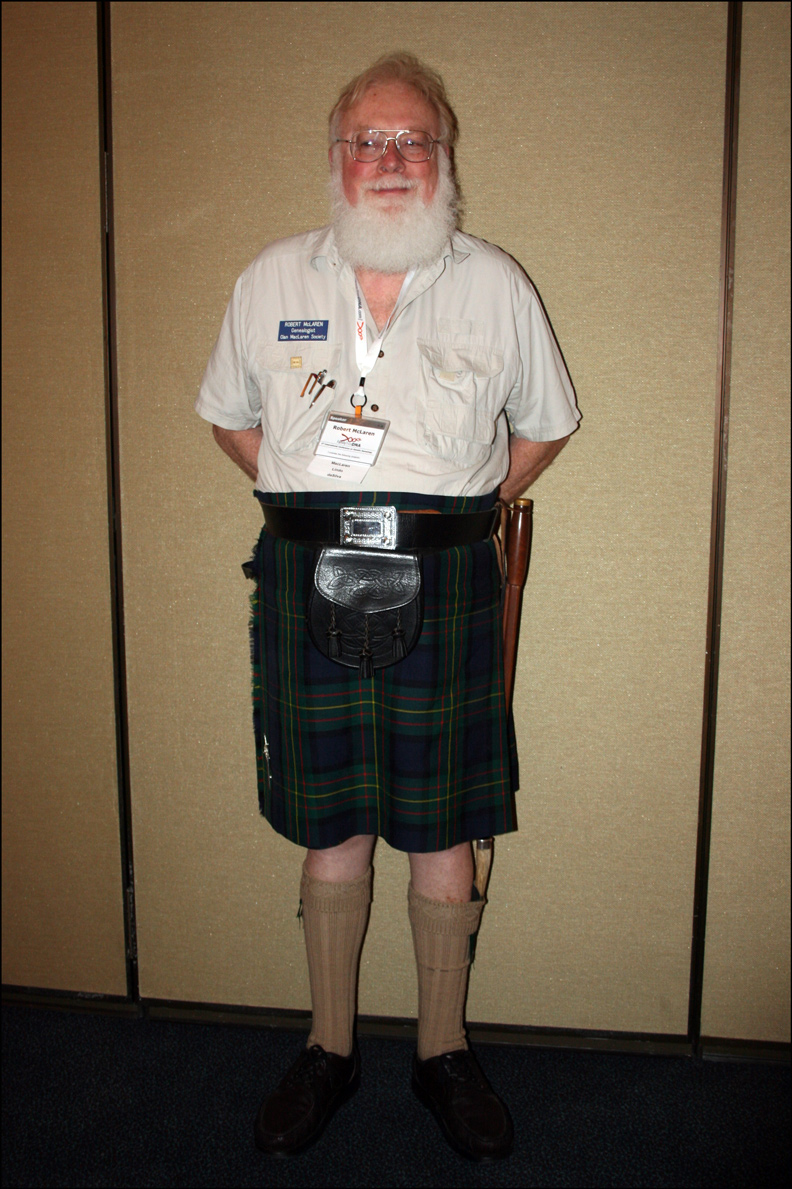At the recent Family Tree DNA 5th International Conference on Genetic Genealogy for Project Administrators, Robert D. McLaren presented a talk entitled “Lessons Learned from Running a Large Surname DNA Project.”
Robert D. McLaren
SOURCE: Robert D. McLaren (Houston, Harris County, Texas). Photographed by Stephen J. Danko on 15 March 2009.
Surname projects in genetic genealogy usually require that the project administrator recruit participants. Participants can be recruited by both a shotgun approach and a targeted approach. Shotgun approaches include advertising in family/clan newsletters, surname websites, and surname lists.
To effectively recruit participants, project administrators should create a document for possible recruits that provides a brief overview of the project, including reasons to participate. The document should describe how to join the project and the costs involved.
Project administrators must be prepared to address questions about DNA testing, including medical, privacy, legal, insurance, and non-paternity concerns.
Feedback to members is critical. Project administrators may need to encourage participants to upgrade their tests when appropriate, target distant relatives, and explain results.
Project administrators need to calculate modal haplotypes for each haplogroup. Calculated marker by marker, the modal haplotype represents the most frequent allele at each marker.
Estimating the time to the most recent common ancestor (TMRCA)Â is a bit tricky. For example, for two participants who match at 65 out of 67 markers, there is a 45%Â probability that the two share a common ancestor within four generations, and an 84% probability that the two share a common ancestor within eight generations. Still, the TMRCA calculations are designed for populations, not individuals. Two participants who match at 65 out of 67 markers may be much more closely or much more distantly related than predicted by TMRCA calculations.
If the project includes three descendants of a common ancestor, an ancestral haplotype may be estimated (if the possibility of parallel and back mutations is ignored).
Robert McLaren also had several suggestions for Family Tree DNA:
-
Report fractional markers,
-
Generate a new standard panel of fast and medium-fast mutating markers (30 would be great),
-
Include all makers (standard and advanced) in Y-Search, and
-
Rework advanced panels of markers so they don’t overlap standard panels.
Copyright © 2009 by Stephen J. Danko





This stuff is pretty boring, but I keep returning to see the photo of the guy in the kilt ….